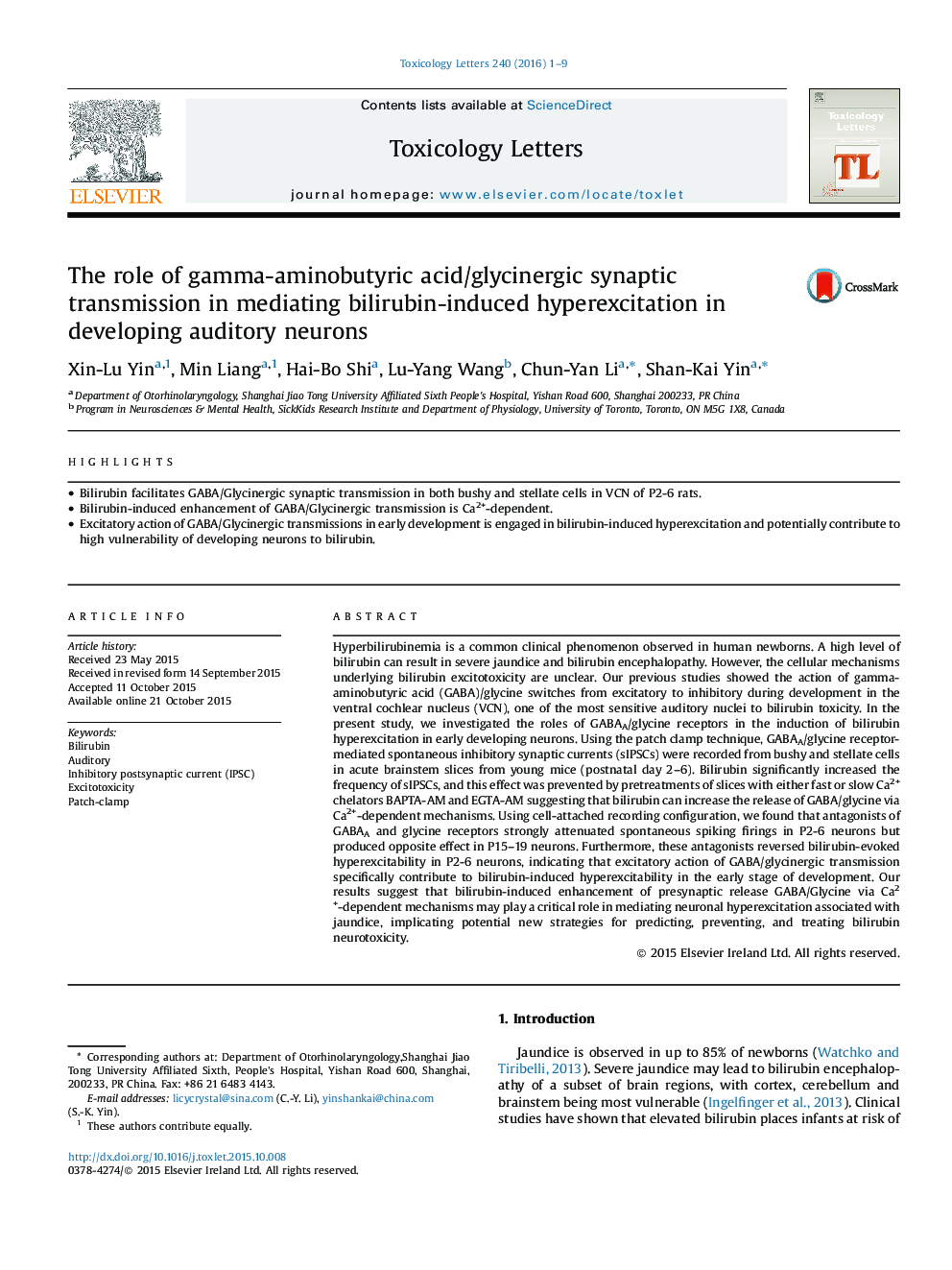| Article ID | Journal | Published Year | Pages | File Type |
|---|---|---|---|---|
| 2598586 | Toxicology Letters | 2016 | 9 Pages |
•Bilirubin facilitates GABA/Glycinergic synaptic transmission in both bushy and stellate cells in VCN of P2-6 rats.•Bilirubin-induced enhancement of GABA/Glycinergic transmission is Ca2+-dependent.•Excitatory action of GABA/Glycinergic transmissions in early development is engaged in bilirubin-induced hyperexcitation and potentially contribute to high vulnerability of developing neurons to bilirubin.
Hyperbilirubinemia is a common clinical phenomenon observed in human newborns. A high level of bilirubin can result in severe jaundice and bilirubin encephalopathy. However, the cellular mechanisms underlying bilirubin excitotoxicity are unclear. Our previous studies showed the action of gamma-aminobutyric acid (GABA)/glycine switches from excitatory to inhibitory during development in the ventral cochlear nucleus (VCN), one of the most sensitive auditory nuclei to bilirubin toxicity. In the present study, we investigated the roles of GABAA/glycine receptors in the induction of bilirubin hyperexcitation in early developing neurons. Using the patch clamp technique, GABAA/glycine receptor-mediated spontaneous inhibitory synaptic currents (sIPSCs) were recorded from bushy and stellate cells in acute brainstem slices from young mice (postnatal day 2–6). Bilirubin significantly increased the frequency of sIPSCs, and this effect was prevented by pretreatments of slices with either fast or slow Ca2+ chelators BAPTA-AM and EGTA-AM suggesting that bilirubin can increase the release of GABA/glycine via Ca2+-dependent mechanisms. Using cell-attached recording configuration, we found that antagonists of GABAA and glycine receptors strongly attenuated spontaneous spiking firings in P2-6 neurons but produced opposite effect in P15–19 neurons. Furthermore, these antagonists reversed bilirubin-evoked hyperexcitability in P2-6 neurons, indicating that excitatory action of GABA/glycinergic transmission specifically contribute to bilirubin-induced hyperexcitability in the early stage of development. Our results suggest that bilirubin-induced enhancement of presynaptic release GABA/Glycine via Ca2+-dependent mechanisms may play a critical role in mediating neuronal hyperexcitation associated with jaundice, implicating potential new strategies for predicting, preventing, and treating bilirubin neurotoxicity.
